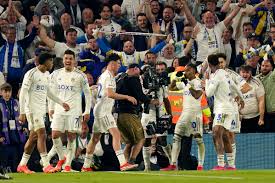VAR certainly stirs up controversy week in and week out in the Premier League, with fans, players, and managers often left divided over its decisions. Let’s delve into the incidents you mentioned:
- Tottenham Hotspur penalty appeal: Without specific details of the incident, it’s challenging to determine definitively whether Tottenham should have been awarded a penalty before Arsenal scored their second goal. VAR reviews incidents that are “clear and obvious errors” or “serious missed incidents” in four key areas: goals, penalty decisions, direct red card incidents, and mistaken identity. If the incident in question fell into one of these categories and there was clear evidence to overturn the on-field decision, then Spurs should have been awarded a penalty.
- Chelsea’s disallowed late winner: Again, the specifics of the incident are crucial for a proper analysis. VAR typically reviews goals for potential infringements such as offside, fouls, or handballs. If Chelsea’s late winner was disallowed due to a clear and obvious error in accordance with the Laws of the Game, then the VAR decision would be deemed correct. However, if there was controversy or debate surrounding the decision, it could fuel further discussions about the effectiveness and consistency of VAR.
- Cody Gakpo and Alphonse Areola incident: Once more, details are necessary to fully assess this incident. If there was a contentious challenge or potential foul committed by either player, VAR would intervene if the on-field officials missed it and it met the criteria for review. The ultimate determination of whether the VAR decision was correct would depend on the evidence available and whether it aligned with the Laws of the Game.
Overall, VAR’s impact on Premier League matches is undeniable, with its decisions often sparking debate and scrutiny. While it aims to improve the accuracy of refereeing decisions, its implementation and interpretation of incidents remain subjects of ongoing discussion and evaluation.
Tottenham 2-3 Arsenal
In this scenario, it appears there was a potential penalty incident involving Trossard’s challenge on Kulusevski, which was not awarded by the referee, Michael Oliver. Following this non-call, Arsenal quickly transitioned into a counter-attack, resulting in Bukayo Saka scoring a goal.
Regarding the potential penalty decision, VAR would likely intervene if there was clear and obvious evidence of a foul that the on-field officials missed. VAR reviews incidents for penalty decisions if there is a possible error by the on-field referee, including missed fouls or incorrect calls. If VAR determined that Trossard’s challenge on Kulusevski warranted a penalty kick due to a clear foul, then the decision not to award the penalty would be deemed incorrect.
However, if there was minimal or no contact between Trossard and Kulusevski, and it was a legitimate challenge, then the decision to allow play to continue would stand. VAR typically respects the on-field referee’s judgment unless there is compelling evidence to overturn it.
The subsequent counter-attack and goal scored by Arsenal would then be valid, as the play continued according to the referee’s decision at the time. If there were any issues regarding offside, fouls, or other infringements during the buildup to the goal, VAR would have reviewed those aspects as well. Ultimately, the correctness of the decisions made by VAR depends on the application of the Laws of the Game and the interpretation of the incident in question.
In the incident involving Alex Murphy and Jayden Bogle, referee Harrington initially awarded a penalty to Sheffield United in the 90th minute after Murphy appeared to foul Bogle. However, the decision was checked by VAR.
Possible penalty: Robinson challenge on Muñoz
In the incident involving Daniel Muñoz and Antonee Robinson, Muñoz collected a pass from Jean-Philippe Mateta and went down as Robinson closed in from behind in the 10th minute. Referee Stuart Attwell chose not to award a penalty and restarted play with a goal kick. However, the incident was reviewed by VAR.
Possible penalty: Handball by Tarkowski
In the 73rd minute of the match between Brentford and Everton, Brentford won a corner kick, and Ivan Toney flicked the ball on at the near post. The ball then ran harmlessly into the grasp of Everton goalkeeper Jordan Pickford, but there was a handball by James Tarkowski, which went unnoticed by the on-field officials. The incident was subsequently checked by VAR, with Michael Oliver overseeing the review.



